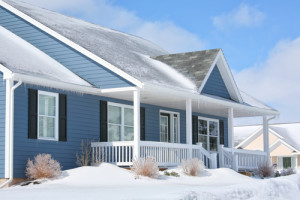Can I Sell My House with a Reverse Mortgage?
 To help you through your retirement, you took out a reverse mortgage on your family home. Now, several years into your retirement, you son wants to buy his childhood home so you can move to a warmer climate. Can you sell your home?
To help you through your retirement, you took out a reverse mortgage on your family home. Now, several years into your retirement, you son wants to buy his childhood home so you can move to a warmer climate. Can you sell your home?
Reverse mortgage
A so-called “reverse mortgage” is a home loan that offers regular cash payments (in a single lump sum, a monthly advance, a line of credit, or a combination of the three) to a homeowner based on the home’s equity. The borrower must be above the age of 62 (in the U.S.) and the home must be his/her principle residence. Economists proposed the loans as a means of assisting seniors in maintaining a level income, and the IRS does not consider funds from a reverse mortgage to be income, but rather, loan advances.
Repayment
Typically, the borrower can defer repayment of the loan until he dies, sells the home or moves away from the home for more than 12 consecutive months. When the loan comes due, the borrower or her heirs may refinance the loan, pay the loan with interest or sell the home, cashing out any remaining equity. Alternatively, they may turn the home over to the lender of the reverse mortgage, giving up all claims to the property or the equity in the property. With a HECM (Home Equity Conversion Mortgage), available through the Federal Housing Authority (FHA), the borrower can never owe more than the home is worth, so the lender only has recourse on the property, not the borrower or the borrower’s heirs.
Selling the home
The interest on a reverse mortgage compounds over the life of the loan, which means that each month, interest accrues on both the borrowed amount and the unpaid interest. The final mortgage owed may be much higher than the original amount borrowed. If selling the home, here are the first steps to take:
- Determine how much is owed. You will owe all of the money borrowed to-date, compounded interest on that money, and fees that the lender may charge.
- Obtain a payoff quote from the lender. This gives you an estimate of the amount required to pay the loan in full. Remember that a payoff quote is for a specific date or date range, so if the sale takes longer than anticipated, the final amount likely will be higher than the quote.
- Contact your real estate agent. We not only can help you with the sale of your home, we can help determine the fair market value and determine if selling a home with a reverse mortgage is appropriate for your situation.
When the home sells, the reverse mortgage will be paid from the proceeds of the sale. Any remaining monies after paying off your real estate agent and any liens, fees or other loans will be yours.
Remember that the original reverse mortgage loan may be higher than what the property currently is worth. In that case, it may not be in your best interest to sell the home. We can help you determine if selling your home is the right decision for your circumstances.
Compliments of Virtual Results




 As we prepare to enter the holiday shopping season, home sellers may think it is too late to sell their home this year. You may have heard that homes sell better in the spring, so you might be tempted to take your home off the market until after the New Year. After all, you have shopping to complete, baking to do, decorating to finish and myriad programs and activities vying for your time.
As we prepare to enter the holiday shopping season, home sellers may think it is too late to sell their home this year. You may have heard that homes sell better in the spring, so you might be tempted to take your home off the market until after the New Year. After all, you have shopping to complete, baking to do, decorating to finish and myriad programs and activities vying for your time. One of the very first discussions the
One of the very first discussions the 
 With November just around the corner, winter weather is on its way. Now is the time to get the jump on cold weather and winterize your home. Whether you are selling your home or you are a new homeowner, it is a good idea to keep these things in mind:
With November just around the corner, winter weather is on its way. Now is the time to get the jump on cold weather and winterize your home. Whether you are selling your home or you are a new homeowner, it is a good idea to keep these things in mind: You bought a starter home that gave you entre into the world of home ownership, but now, your requirements have changed … you’ve added a spouse or children, you’ve moved your office home, that wasn’t as affordable so you had to use coupons from
You bought a starter home that gave you entre into the world of home ownership, but now, your requirements have changed … you’ve added a spouse or children, you’ve moved your office home, that wasn’t as affordable so you had to use coupons from  Often, homeowners make changes and upgrades to their home without securing permit. In some cases, permits are not required, but in many cases they are. When you attempt to sell your home, investigations by the buyer’s real estate agent, inspector or legal representation may discover undocumented changes that could hinder the sale. The degree to which this causes difficulties greatly depends on the types of changes made to the original structure, and whether your buyer’s lender will give a loan on property with unpermitted changes.
Often, homeowners make changes and upgrades to their home without securing permit. In some cases, permits are not required, but in many cases they are. When you attempt to sell your home, investigations by the buyer’s real estate agent, inspector or legal representation may discover undocumented changes that could hinder the sale. The degree to which this causes difficulties greatly depends on the types of changes made to the original structure, and whether your buyer’s lender will give a loan on property with unpermitted changes. Buying a home is one of the biggest investments you’ll make, and many times new buyers worry that they’ll make a wrong decision and then be sorry when it is too late to change it. What if I paid too much for the house? What if the neighborhood isn’t what I thought it was? What if I lose my job and can’t pay the mortgage? What if I hate my neighbors? What if a better house becomes available next week/month/year?
Buying a home is one of the biggest investments you’ll make, and many times new buyers worry that they’ll make a wrong decision and then be sorry when it is too late to change it. What if I paid too much for the house? What if the neighborhood isn’t what I thought it was? What if I lose my job and can’t pay the mortgage? What if I hate my neighbors? What if a better house becomes available next week/month/year?
 Ceiling fans aren’t just about moving air, they are an important part of creating the right atmosphere in your home. Before choosing a fan, consider what you really want it to do.
Ceiling fans aren’t just about moving air, they are an important part of creating the right atmosphere in your home. Before choosing a fan, consider what you really want it to do.

 Catch Our Feed
Catch Our Feed Subscribe via Email
Subscribe via Email Follow Our Tweets
Follow Our Tweets Friend Us On Facebook
Friend Us On Facebook Watch Us On Youtube
Watch Us On Youtube